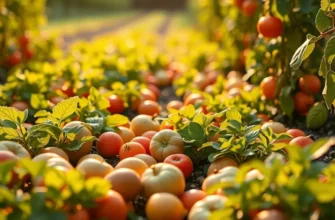Tea, a beloved beverage worldwide, has long been praised for its health benefits. However, there’s a significant concern regarding its potential interference with iron absorption. Many people wonder whether enjoying their daily cup could negatively affect their iron intake, particularly those at risk of deficiency. Exploring the connection between tea and iron absorption can help clarify this common nutritional dilemma.
How Tea Affects Iron Absorption

Tea, cherished for its calming and antioxidant properties, contains specific compounds that can impede iron absorption. Among these, tannins and polyphenols are particularly noteworthy. These compounds form insoluble complexes with iron, especially non-heme iron found in plant-based foods, reducing its bioavailability.
Tannins are abundant in black tea, blackening the brew and infusing it with astringency. They bind to dietary iron, forming complexes that the body cannot absorb efficiently. As a result, iron availability from food is diminished, particularly affecting those relying on plant-based diets. It’s crucial for vegans and vegetarians to be mindful of this interaction, as primarily plant-derived non-heme iron is more susceptible.
Polyphenols, prevalent in both black and green teas, also impact iron absorption. They possess antioxidant benefits but similar to tannins, they can significantly decrease non-heme iron absorption. However, their impact varies depending on the tea type and preparation method. Green tea, though lower in tannins compared to black tea, still contains sufficient polyphenols to affect iron bioavailability. This effect is less pronounced in herbal teas, which often lack the tannins and polyphenols present in true tea varieties.
The interaction between these compounds and iron can have dietary implications. For individuals focusing on increasing their iron levels, it may be beneficial to consume tea between meals rather than alongside iron-rich foods. Moreover, combining vitamin C-rich foods with meals can enhance non-heme iron absorption, counteracting the inhibition caused by tannins and polyphenols.
Understanding the balance between enjoying tea and maintaining adequate iron levels is crucial. Exploring various ways to optimize nutrient absorption without sacrificing tea consumption can support overall health and well-being. For more on enhancing nutrient balance in plant-based diets, consider exploring easy-plant-based-eating.
While black and green teas have marked effects, other types like herbal teas vary widely. Many lack the inhibitory compounds found in traditional teas, making them a potential alternative for individuals concerned about iron absorption. Nonetheless, it’s important to remember that individual tolerance and dietary needs differ. Personal experimentation, complemented by nutritional guidance, can tailor tea consumption to individual health goals.
Maximizing Iron Absorption While Enjoying Tea

Many tea lovers are concerned about its potential to hinder iron absorption, especially for those with specific dietary needs. With some thoughtful strategies, you can enjoy your favorite brew without compromising iron intake. Below are practical tips on how to achieve this balance.
Timing is key when it comes to drinking tea for minimizing its impact on iron absorption. Tannins, the compounds in tea that may inhibit iron uptake, bind to iron more readily when consumed simultaneously. To counter this, schedule your tea breaks between meals. Aim for at least an hour before or after eating, giving your body a chance to absorb iron from your food without interference.
Incorporating vitamin C-rich foods into your meals can also offset the inhibitory effect of tea on iron absorption. Vitamin C enhances the absorption of non-heme iron, found primarily in plant-based sources. Pair iron-rich foods such as spinach, lentils, and beans with vitamin C-loaded foods like bell peppers, oranges, or strawberries. This combination accelerates iron uptake and mitigates the effects of tannins.
Choosing suitable tea types can further help you manage iron absorption. Herbal teas such as chamomile, ginger, and peppermint contain fewer tannins than traditional black or green teas. These options allow you to enjoy a cup without a significant impact on your iron levels. Still, it is crucial to find a balance and not replace meals with tea.
For vegetarians, who might rely on plant-based iron sources, these strategies are even more critical. Non-heme iron is less readily absorbed, but with proper diet planning, its absorption can be enhanced. Combining foods wisely and timing your tea sessions can help maintain optimal iron levels.
Pregnant women need increased iron to support both their own needs and those of the developing baby. Carefully managing when to consume tea is vital, as is ensuring that meals are rich in both iron and vitamin C. Consulting a healthcare provider about dietary supplements and iron levels can provide additional personalized guidance.
Ultimately, mindful consumption and strategic pairings can make a meaningful difference. Embracing these practices allows you to savor your tea while consciously supporting your nutritional health. For more tips on integrating plant-based options into your diet, explore our easy plant-based eating guide.
Final words
Understanding the relationship between tea and iron absorption can empower consumers to make informed dietary choices. While compounds found in tea can inhibit iron absorption, adjusting the timing of tea consumption and pairing it with iron-rich foods can help mitigate these effects. For individuals with higher iron needs, such as pregnant women or those on plant-based diets, these strategies are crucial to ensure adequate iron intake. By following these guidelines, tea lovers can continue to enjoy their warm beverage without compromising their nutritional health.








